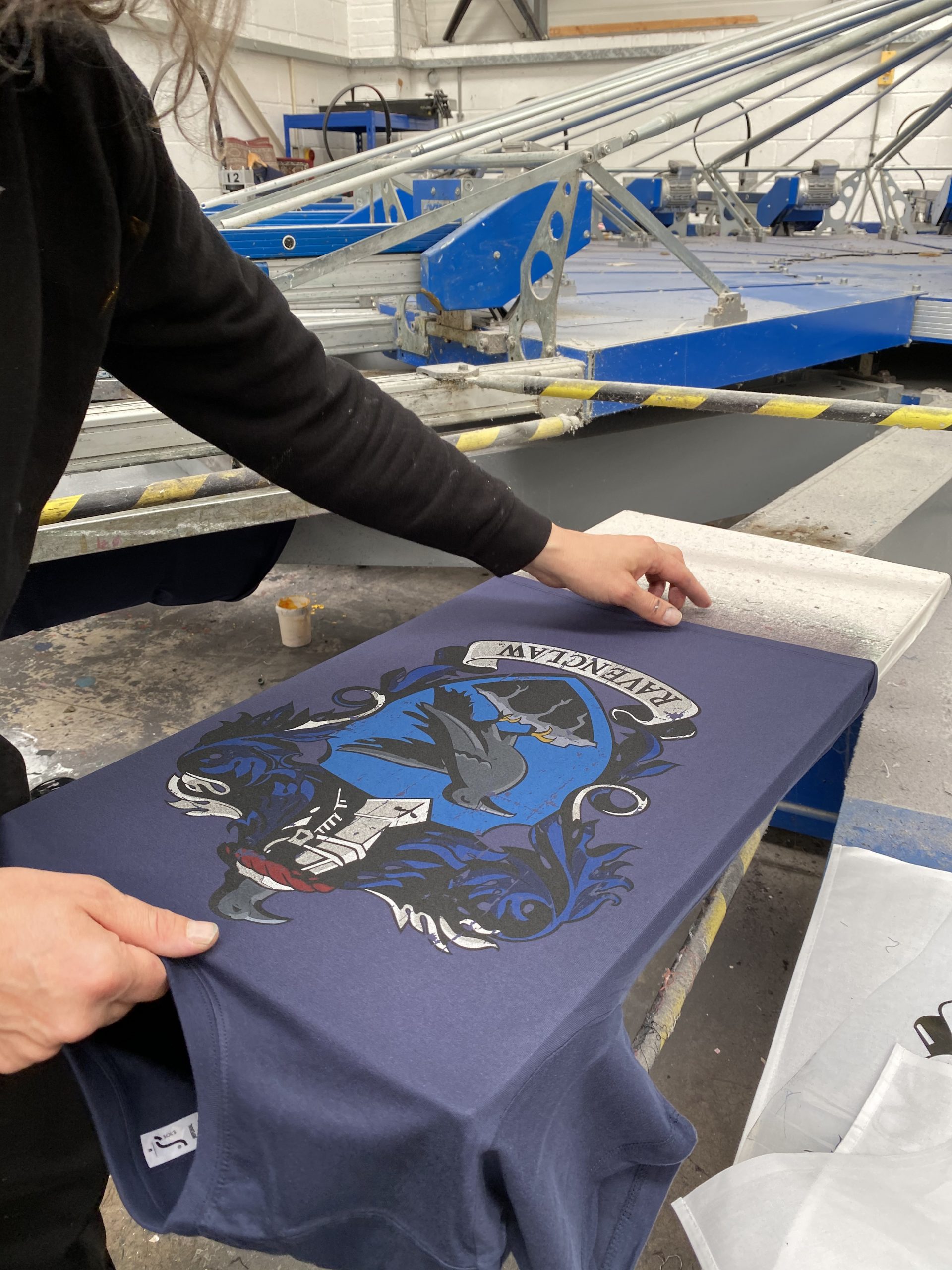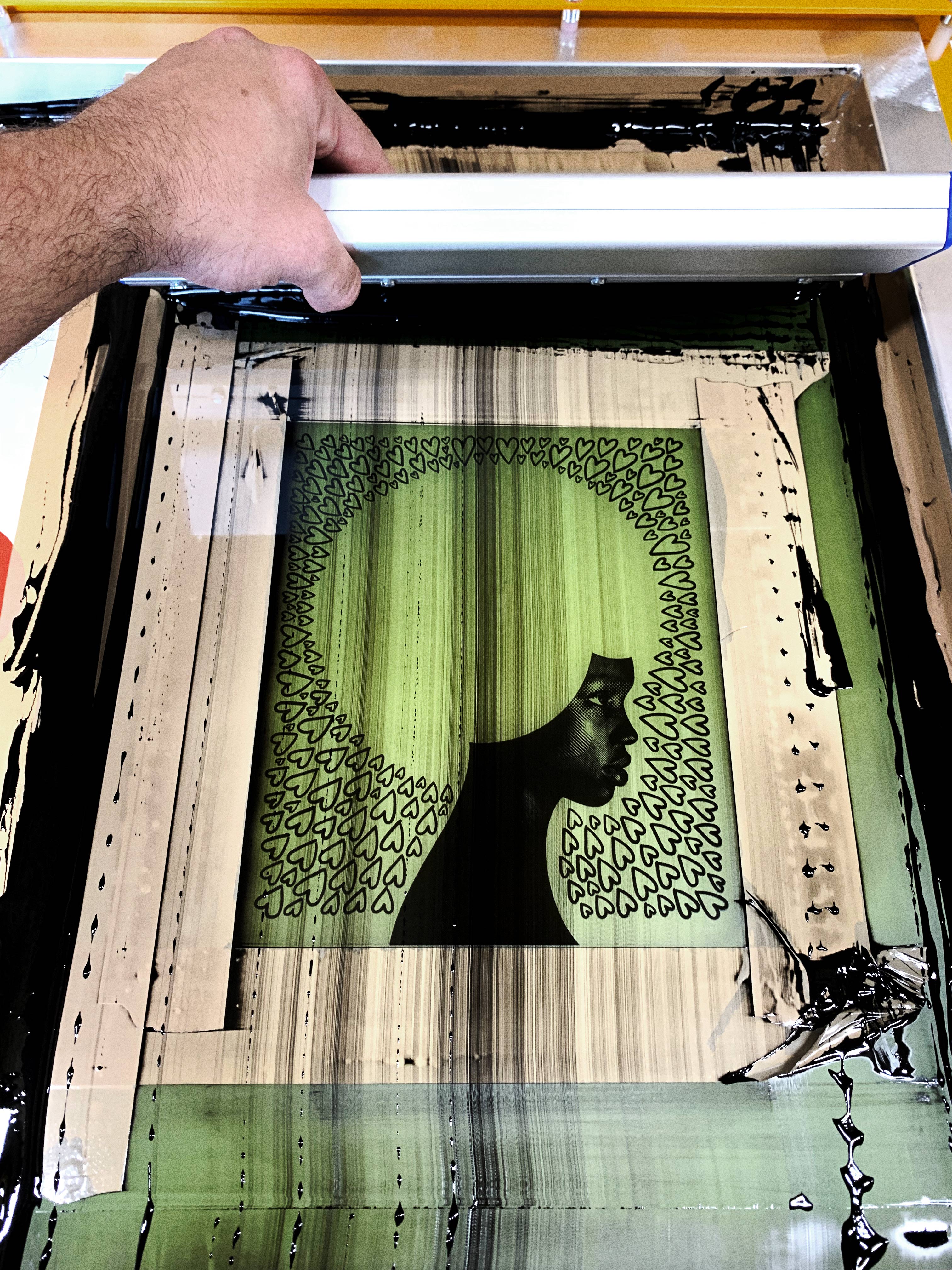The Essential Guide to Comprehending Screen Printing and Its Versatile Utilizes
Screen printing has a rich history that dates back to old times, evolving into an innovative method utilized across different sectors today. This guide explores the intricacies of the screen printing process, outlining its applications in advertising and marketing, style, and home style - 10:9 Design contact. Comprehending these principles can open creative potential for both industrial and artistic tasks. The following areas will disclose essential suggestions and strategies to enhance one's screen printing endeavors
The Background of Screen Printing
Although screen printing has roots that map back centuries, its development mirrors the imaginative and technological improvements of numerous societies. Stemming in old China, the strategy was originally used for embellishing textiles and later spread to Japan, where it became important to Ukiyo-e woodblock printing. The method changed to Europe in the 18th century, where it obtained popularity amongst artisans and commercial printers. The invention of photo solution in the 20th century reinvented screen printing, enabling even more complex styles and better performance. Artists like Andy Warhol even more propelled its popularity, using the medium to create iconic jobs that blended commercialism and great art. By the late 20th century, screen printing had actually established itself as a versatile strategy, employed in fashion, advertising, and fine art. Today, it proceeds to advance, integrating electronic modern technology and increasing its applications throughout various markets.
The Screen Printing Refine Explained
Screen printing transforms imaginative visions into tangible styles with a collection of exact steps. Initially, an image is developed and after that transferred onto a screen, generally made from fine mesh material stretched over a structure. A light-sensitive solution is put on the screen, which is revealed to light, hardening in areas not covered by the picture. After cleaning out the unhardened emulsion, a pattern is formed.
Next, the screen is positioned over the substrate, whether it be textile, paper, or one more product. Ink is then pressed through the open areas of the pattern utilizing a squeegee, transferring the style onto the substrate below. This process can be duplicated for several colors, calling for separate displays for every tone. Ultimately, the printed thing is healed making use of warm to ensure the ink sticks appropriately, resulting in a durable, vivid design on-line.
Kinds Of Screen Printing Techniques

Furthermore, specialized techniques, such as discharge screen printing, eliminate dye from the material to create softer prints, while aluminum foil screen printing applies metallic foil to achieve a shiny finish (10:9 Design contact). Each method provides unique characteristics, catering to various innovative requirements and manufacturing ranges, ultimately broadening the possibilities within the screen printing domain
Applications of Screen Printing in Numerous Industries

Additionally, the signs and advertising markets make use of screen printing for developing eye-catching screens and banners. This technique enables vibrant colors and detailed styles that record interest. In electronic devices, screen printing is employed for using conductive inks to circuit card, vital for element connections. The home decoration industry welcomes screen printing to produce distinct designs on fabrics and wall surface art. On the whole, screen printing acts as an essential tool throughout diverse fields, improving items with personalized and aesthetically enticing graphics.
Tips for Successful Screen Printing Projects
While undertaking a screen printing job, cautious interest to information can substantially boost the final result. Initially, selecting top notch products is vital; this includes the screen, inks, and substrates. Using ideal mesh counts can impact ink deposition and information resolution. Prep work is just as important; thorough cleansing of displays and appropriate exposure times guarantee crisp prints.
Next off, precise enrollment is critical for multi-color prints. Using placement tools can help attain exact layering. In addition, testing prints on scrap materials prior to production assists identify potential issues without squandering sources.

Regularly Asked Inquiries
What Products Are Finest for Screen Printing on Material?
Cotton and polyester blends are suitable for screen printing on textile because of their sturdiness and ink absorption. Furthermore, specialized materials like silk or canvas can generate one-of-a-kind appearances and coatings, enhancing the total style high quality.
Exactly how Do I Tidy and Maintain Screen Printing Equipment?
To clean and keep screen printing equipment, one must consistently clean displays with ideal solvents, examine squeegees for wear, oil relocating parts, and store all items in a completely dry, dust-free setting to lengthen their life-span.
What Are the Ecological Influences of Screen Printing?
Screen printing can have significant ecological influences, including chemical waste from inks and solvents, water usage throughout cleansing procedures, read more and power usage. Sustainable methods and eco-friendly products are essential for lessening these negative results.
Can Screen Printing Be Done at Home Efficiently?
Screen printing can be properly done at home with the ideal materials and strategies. Hobbyists can produce high quality prints, though success depends upon their skill degree, tools, and understanding of the procedure entailed.
What Are the Expenses Related To Beginning a Screen Printing Business?

Beginning a screen printing company involves costs for devices, products, and office. Initial costs typically vary from a few hundred to a number of thousand bucks, depending on the range, quality of equipment, and wanted production capacity.
Screen printing has an abundant history that dates back to old times, advancing right into an advanced technique made use of throughout different markets today. One more strategy, rotary screen printing, uses cylindrical screens, facilitating continual printing on fabric rolls, consequently improving performance for massive manufacturings. Furthermore, specialty techniques, such as discharge screen printing, eliminate dye from the textile to develop softer prints, while foil screen printing applies metal aluminum foil to attain a shiny surface. In the style market, screen printing is widely used to create vibrant layouts on garments, enabling brand names to showcase their special designs. Cotton and polyester blends are excellent for screen printing on fabric due to their resilience and ink absorption.